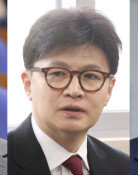Tasks to be resolved by next Chief Justice
Tasks to be resolved by next Chief Justice
Posted August. 22, 2023 08:43,
Updated August. 22, 2023 08:43
The six-year term of Chief Justice of the Supreme Court of South Korea Kim Myeong-soo will come to an end on Sept. 24. The next chief justice will be nominated independently by the South Korean president without a candidate recommendation committee and appointed after the National Assembly’s confirmation hearing and the voting in a plenary session. Considering that it takes one month from nomination to appointment, South Korean President Yoon Suk Yeol will have to nominate the next chief justice by the end of this week.
Under the leadership of Chief Justice Kim, elite senior judges resigned, received disciplinary punishment, or experienced a disadvantage in assignment due to their involvement with the so-called judicial manipulation. Instead, those with a background in the South Korean Law Society and International Human Rights Law Society were promoted to senior judicial posts and key positions, such as Supreme Court justices and the presidents of courts. The priority task that a new chief justice should take on to regain trust in the court is to restore the imbalance of appointment by selectively removing judges who benefitted from their involvement in certain groups and offering opportunities to those who experienced excessive disadvantage due to the judicial manipulation scandal.
Chief Justice Kim got rid of the promotion system for the chief judge of a high court, which was pointed out as a major cause of the bureaucratization of courts, based on the belief that the judicial manipulation scandal was caused by such bureaucratization. While removing the promotion system for the chief judge of a high court is revolutionary, he failed to predict and prepare for potential side effects. As judges have less motivation to work harder to become chief judges of a high court, delays in trials become more common. A new chief justice should build a new system to reward hard-working judges while avoiding the bureaucratization of courts.
Many authorities of courts, including the allocation of administrative affairs, were handed to general judges who are not in special posts under Chief Justice Kim. However, more autonomy for general judges should not lead to the neglect of personnel management. It became harder to discipline the judges who took inappropriate actions, such as treating illegally the prosecution’s collection of personnel-related data in the investigation of the judicial manipulation sandal, which violated political neutrality. As there are many unverified judges who became a judge at a young age in their 20s and 30s due to the unification of judicial officers in South Korea, unlike the U.S., strict personnel evaluation and rehiring screening should be conducted to rule out judges who are outside the norm.
It is worrisome whether the next chief justice candidate to be nominated by President Yoon will be able to get approval from the National Assembly, whose majority is occupied by the opposition party. Under the Moon Jae-in administration, there was an intense dispute between the ruling and opposition parties on the nomination of Chief Justice Kim. His nomination was approved at the end as the People Party, the third largest party in the National Assembly, had a deciding power. The president should nominate a reasonable figure to avoid an unprecedented vacancy in the chief justice position. The opposition party should also be cooperative from a broad point of view when appointing a chief justice.







